Organic container gardening is an environmentally safe way to grow fruits, vegetables, and other plants in containers. Follow the principles of organic gardening; you can grow plants safely in various containers. It includes knowing the history of your containers and choosing materials that do not release toxic materials into the soil. Let’s check out how to start organic container gardening below.
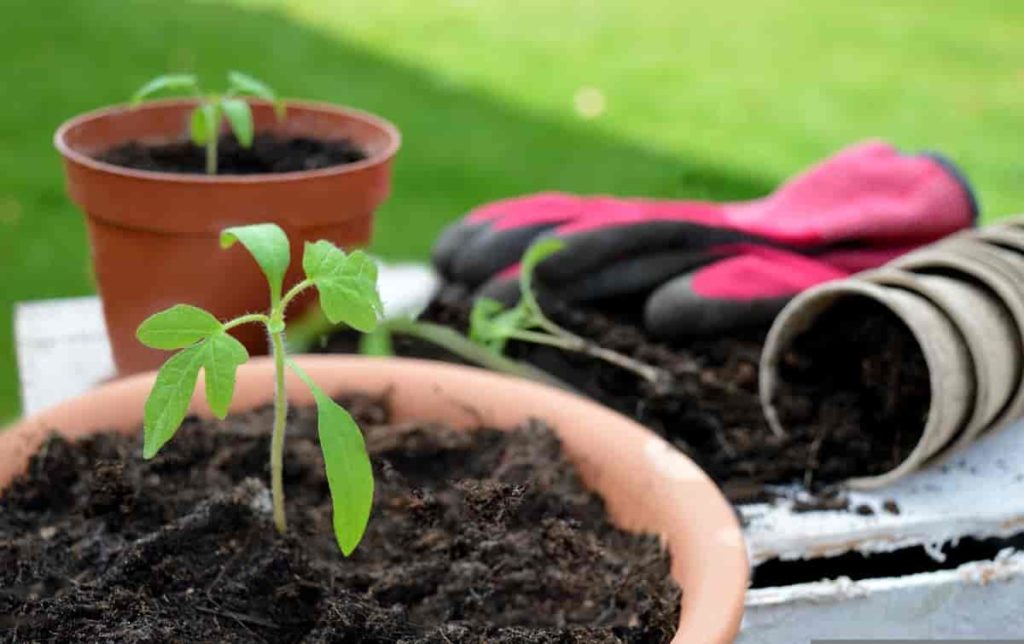
Organic Container Gardening – It represents gardening in containers using organic ingredients. In other words, a plant is grown using natural or organic fertilizers to make good soil. It acts as a plant lifeline when all this is done in containers; hence it is called container gardening. Gardening uses seed fertilizer and soil to grow a plant in a container or garden. Through gardening, you get in touch with nature.
Organic means natural without any harmful chemicals. It comes from living things or things that are good for man’s and nature’s health. Use the wasteful things which come from living things. Container gardening is ideal for those with only a small space for their plants. If you only have a small yard or deck, or if your garden is small, container gardening is the best choice. The main focus on containers for organic gardening is to choose something completely free of pesticides, herbs, fungicides, or other synthetic chemicals.
Benefits of organic container gardening
Organic container gardening is growing in popularity. The benefits are:
- No yard required.
- Anyone can do it.
- Some tools and materials are needed.
- It is relatively inexpensive to start and maintain.
- No digging or tilling is necessary.
- Containers can be placed and put in virtually any desired location.
- Choose to place the garden in the most beneficial place.
- Better control of growing conditions.
- It is easier to protect plants from extreme or adverse weather conditions.
- Grow edible herbs and vegetables.
- It saves space – This means that it is ideal for people who have small gardens and courtyards.
- It’s cheap – Almost anything can be used as a container. It is practical. Container gardening reduces workload.
- More varieties – You can grow plants that may not be suitable for growing in your garden soil, and plants may grow close to each other even though they may have different soil requirements.
- No weeding: Due to the small surface region, it is unlikely that grass seeds will find their way into pots.
- No heavy garden tools: saves money with less care.
Locations to place organic container garden plants
- Balcony – Another place you can place containers because the sun doesn’t shine all day long.
- Kitchen – You can also hang organic containers in the kitchen window to get fresh air or give people fresh food to meet their needs.
- Organic container planting places include decks, balconies, driveways, sidewalks, window boxes, and hanging boxes.
Principles of organic container gardening
The principle of organic gardening is to improve the health of plants and the people who use them. But it also encourages using renewable resources that conserve soil, water, and energy to improve the quality of the environment. Organic gardeners can prevent toxins from contaminating plants when using containers. Safe container gardening means doing everything you can to avoid using containers that may contain chemicals that can get to your plants through the soil.
What type of container is used for organic gardening?
In organic container gardening, you can use these containers like terracotta, clay, plastic, or wooden box.
In case you missed it: How to Start Organic Kitchen Gardening: Tips, Ideas, and A Step-By-Step Guide for Beginners
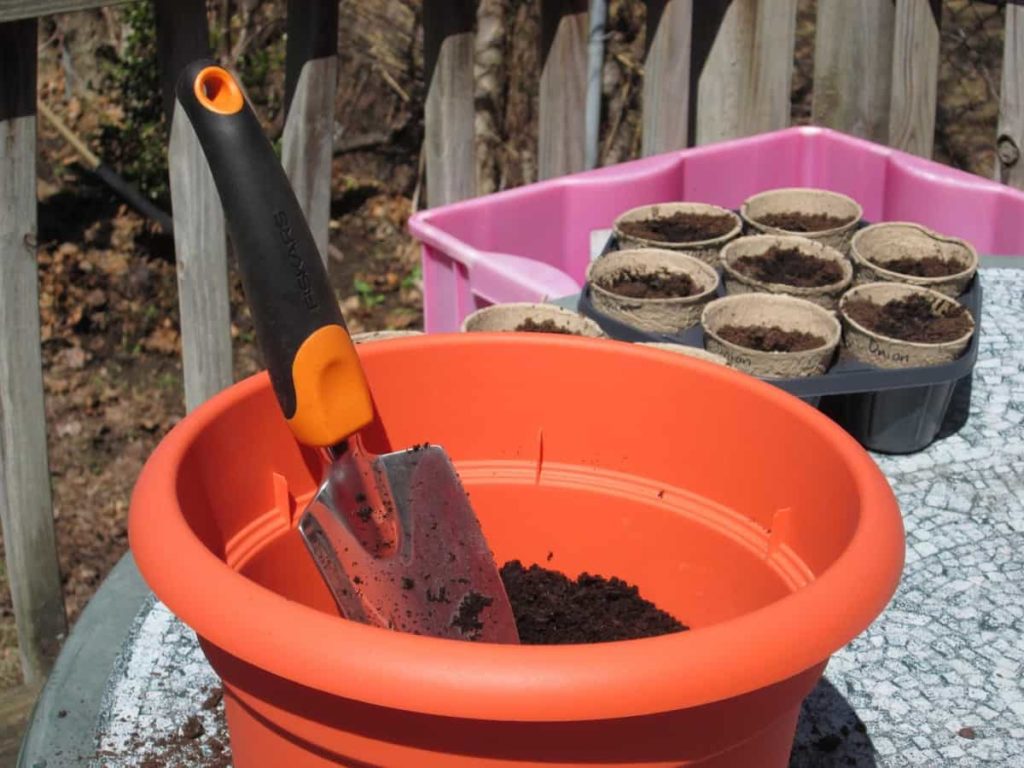
Terracotta or clay – It is the most people use because it looks like a beautiful and traditional way of planting. Both containers have good drainage holes for soil and plant growth.
Plastic container – Plastic is a reusable product found mainly in our homes. It is another method to grow a plant. Just make a hole in the bottom of the bottle and add some soil; this way, you can grow the plant.
Natural stone and concrete – Natural stone containers like clay or terracotta are an attractive and safe option for organic gardening. However, stone utensils are fragile, so they may not be as durable as wooden or plastic utensils on the outside. Concrete is safe container material, but it can be heavy, so it is not suitable for the plants you will need to rotate.
Recycled plastic containers – Recycled plastic containers are lightweight and durable and contribute to a healthy environment. Plastic is also cheaper and available in different colors, sizes, and shapes. Look for a container-based recycling symbol to determine if a container is made of recycled plastic. Pay close attention to the recycling numbers on the container, which can tell you there is more or less risk of chemicals leaking into used plastic.
Wooden box – Wooden boxes or trays are the best way to grow plants in large quantities. It gives you the best results when you want to grow food in a wooden pot as it can be kept out due to the large space.
Vegetables growing in organic container gardening
You can grow these vegetables through Organic Container Gardening as follows: – Peepers, Baby Onion, Radishes, Peas, Mushroom, Bell peppers, Beets, Carrots, Broccoli, Green beans, Tomatoes, Kale, etc.
Fruits and herbs growing in organic container gardening
Fruits – Apples, Blackcurrants, Blueberries, Gooseberries, Pears, Raspberries, Redcurrants, Strawberries, White currants.
Herbs can also be grown in organic container gardening. Some include Thyme, Savory, Dill, Mint, Basil, Parsley, Chives, and Sweet Marjoram.
How to start organic container gardening: A Step-by-step guide for starting organic container gardening
Step 1: Carefully select your soil
Soil should contain essential nutrients for the soil when you want to do organic gardening. For this, we will use dry and light soil. You can use garden soil, dung manure, animal waste, plant residues, vermicompost, and fertilizer for organic food. Do not use harmful chemicals in organic food. Soil is the ‘home’ of your plant. In the same way, they get access to most of their food and water, so choosing good soil is essential for good growth.
In case you missed it: Organic Farming in Germany: How to Start, A Step-By-Step Guide for Beginners
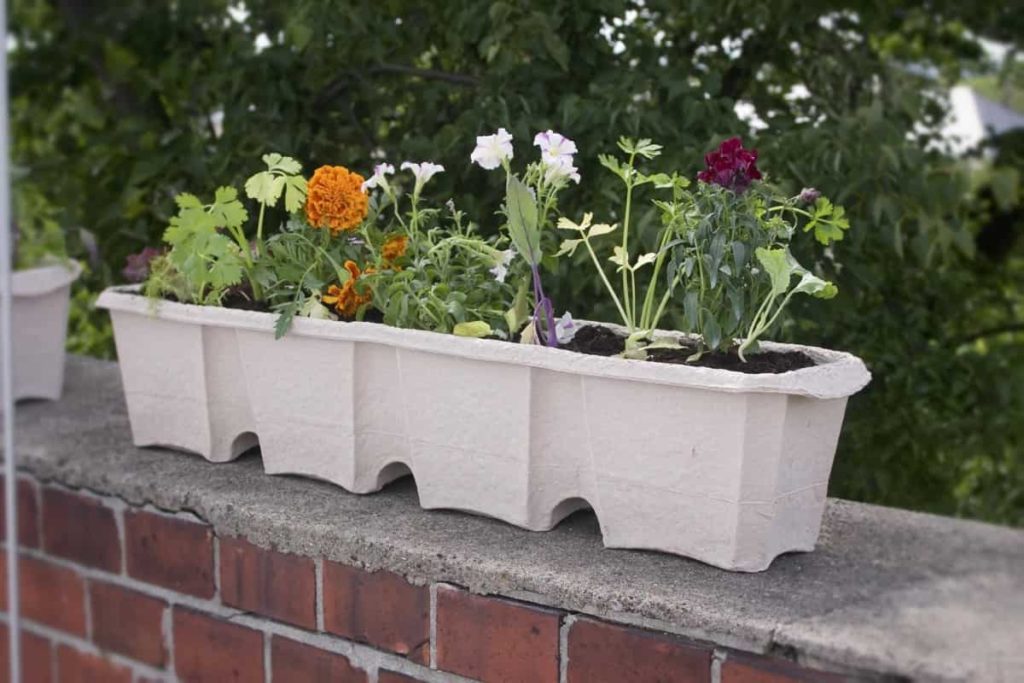
Soilless mixes are the best option for container gardens, with good drainage and aeration. However, some store-bought clay mixtures may contain synthetic ingredients that interfere with your organic growth mission. Make sure to buy only soil mixtures that are organically marked. Alternatively, you can create your soil mix or source from responsible and reliable sources.
Soil mix is perfect for growing in containers, according to the weather and the needs of your plants, and contains the best mix for your vegetable selection. When selecting what to use to fill containers, don’t use garden soil on your own, no matter how well things grow in it. Container soils are often called soilless or artificial media because they have no soil.
When these mixtures are used, they should be slightly moistened before planting. Fill a tub with media, add water and lightly moisten the media. When filling containers with media, do not overfill the container. Leave an inch of space between the clay’s top and the pot’s edge. Containers require well-ventilated and well-drained soil while retaining enough moisture for plant growth.
Step 2: Sun and light requirements
When choosing plants, consider the light available for a particular location and read the light requirements on individual seed packets and plant labels. If you are planting many plants in one container, or one pot, in an area, do not mix the plants with different lighting needs.
At the same time, it is surprisingly easy to provide plants with the light they need when you use pots. If you see that they are not getting enough sun, pick them up and take them to a sunny place. If they are in too much sun, take them to a shady place. It is also important to change the container’s location as the amount of sunlight available varies with the seasons.
Step 3: Select the container carefully
Going the container way saves space and helps control pests and soil problems, making it possible to have fresh produce grown at home without a yard. But it is important to select a seed or plant specifically designed for compact container space. With the growing interest in container gardening, seed companies are producing vegetable seeds explicitly designed for container gardening.
Anything with soil and drainage holes at the bottom can be turned into a container garden for ground plants. For vibrant plant growth, containers should provide adequate space for roots and soil sources, allowing the plant to flourish. Cover the drain by placing gravel or newspaper under the container to make sure the water drains but not the dirt.
When choosing a container, it is best to use one large enough to support the plant’s root system and keep it healthy. Before you use a container, you must ensure it is clean. It means that no soil or any other material from previous seasons should be left on the walls. The container should be sterile so that it does not endanger your plants. When looking for containers for use in organic container gardening, you should make sure of two important things:
- Containers have holes or slots at the bottom to draw water out.
- That you have space to accommodate containers.
In case you missed it: Organic Raised Bed Gardening: How to Start from Scratch, A Step-By-Step Guide for Beginners
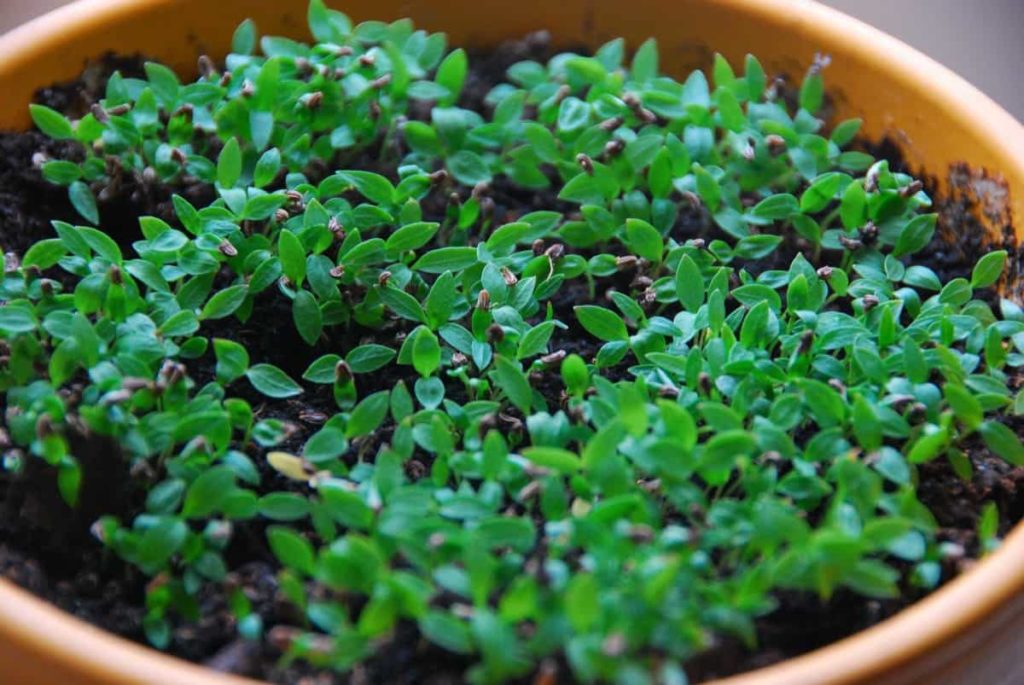
Step 4: Choosing organic planting medium
Never use a garden soil mix in pots or containers for growing plants. These products are designed for use in garden beds; when used in pots, they retain too much moisture. All of this leads to a water-filled root system and the ideal growth of plants. Organic potting mix for growing plants is a certified organic product that maximizes aviation and water retention.
Step 5: Planting process
Plant seeds or seedlings according to the instructions on the planting packet. Seeds work very well because the mixture provides good conditions for seed germination. Since plants start very small, a common mistake is to place them very close to each other. However, as the plant matures, they become crowded and do not perform, nor do they taste as good as if they had enough space. Tomatoes will do best with a strong plant per pot. Beans and peas will work evenly with 2 to 3 plants per pot. Remember to water well.
Step 6: Feed your plants consciously
Feeding your plants well is especially important when growing in a container garden. Due to drainage holes, nutrients can be washed away and never reach your plant. Firstly, make sure you add organic matter to your soil before planting. It will help in priming the soil for the growth of your plant.
Step 7: Fertilizer requirement for organic container garden plants
Fertilize plants organically that are chemical-free. Follow the instructions carefully on the fertilizer you buy to feed your garden plant as much as possible. A regular fertilizer program is required to keep the plants growing and attractive in all seasons. The fertilizer choice analysis will depend on what type of plants you grow. More nitrogen sources would be good for plants that are grown for their plants, while flower and vegetable crops would prefer varieties with less nitrogen and more phosphorus.
Container-grown vegetables are best fed by mixing fertilizer and balanced organic fertilizer each time you re-pot, followed by a liquid fertilizer procedure when the roots begin to fill the container. Most well-known brand pottery soils already contain starter fertilizer, and organic pottery soils contain nutrients from the fertilizer used to make them. Fish emulsion or kelp compounds are popular with organic gardeners or make your liquid fertilizer.
When it comes to organic container gardening, fertilize with things that are organic and as natural as possible. Organic fertilizers mixed with water and applied around plants include liquid sea kelp, compost tea, and fish manure. Worm casting, composted chicken manure, blood meal, nitrate of soda, alfalfa meal, and cottonwood meal are organic fertilizers that can be applied around your garden plants. They are a dry organic fertilizer and can be added to the growing medium when planting. They can be re-applied as needed.
In case you missed it: Organic Farming in USA: Crops, How to Start, A Step-By-Step Guide for Beginners
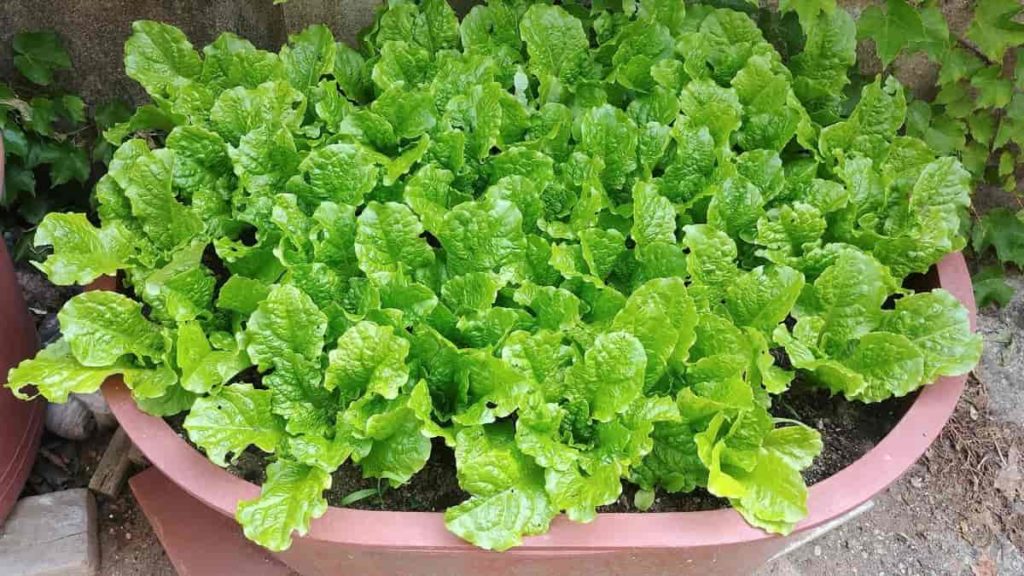
Step 8: Watering the container garden plants
Water in the morning (or as soon as possible). Ideally, container plants should be watered as soon as possible during the day. Watering the plants early in the day gives enough moisture to warm in the afternoon. It also ensures that their leaves dry out by night. Moisture on the leaves at night can encourage the spread of the disease.
Potting soil is lighter and less compact than ordinary garden soil; you will want to water more often when growing in pots. To test the soil moisture, let your fingers move. Press one finger into the potting mix to a depth of at least two inches. If your containers are outside, check the humidity level often, they dry quickly in all this sun and wind.
The easiest watering potted plants is a watering can or a gentle hose. However, when you water, ensure you water the soil, not just the leaves. Continue watering until the drainage holes in the bottom of the vessel are closed. The idea is to water well but give enough time to dry the soil.
Caring for your organic container garden plants
- Containers offer the advantage of being portable. As weather, temperature, and lighting conditions change, you can move your containers to maintain the desired conditions for optimal performance.
- Most fruit vegetables such as Tomatoes, Peppers, Cucumbers, Squash, and Eggplant need full sun.
- Leafy vegetables like Mustard Greens, Spinach, Lettuce, Cabbage, Collards, and Parsley can tolerate more shade than root vegetables like Radishes, Carrots, Turnips, Beets, and Onions.
- There are fast rules when it comes to watering. So, you should always look at your containers and understand the needs of the plants you choose to put in the containers.
- The best way to tell if a container growing plant requires water is to feel the soil. Use enough water each time so that water starts dripping from the drain holes.
Pest and disease control in organic container plants
Growing container plants make it easier to keep pests and diseases to a minimum. Because plants are raised above ground level, they are less susceptible to damage from slugs, rabbits, and other critters that damage garden plants, soil-borne bacteria, and fungi. Keeping containers close to your home also reduces the risk of harming the deer.
And since you often look closely at your container plants when watering, fertilizing, and nurturing them, you’ll probably find some insects before they do more than chew one or two leaves. The quickest and easiest way to control organic pests is at your fingertips: pick the insect leaves, buds, or shoot tips, or pick large insects individually, and wash them with soapy water. If you feel you need to spray, find an insecticide spray in the center of your local garden and apply it according to the instructions on the label.
Harvesting tips for container growing plants
Early in the day is usually the best time to harvest as it is cold, and your fruits and vegetables will still be well hydrated. It is also recommended not to harvest during the rainy season as water can encourage the spread of diseases among plants. Do not cut any produce that is contaminated by bird or animal droppings. Also, beware of anything that is hurt or damaged by animals or the sick.
This type of production should be kept away from healthy production. You can put in a pile of compost, harmful to use in your next growing season but otherwise healthy. When harvesting leafy greens, be sure to prune outside to extend the life of your plant. It will encourage your plant to grow further and grow the crop! Some leafy vegetables are best harvested when they are small and tender. When harvesting fruits and vegetables, make sure they are ripe and ready.
In case you missed it: Organic Vegetable Farming in USA: How to Start, and Top Production States
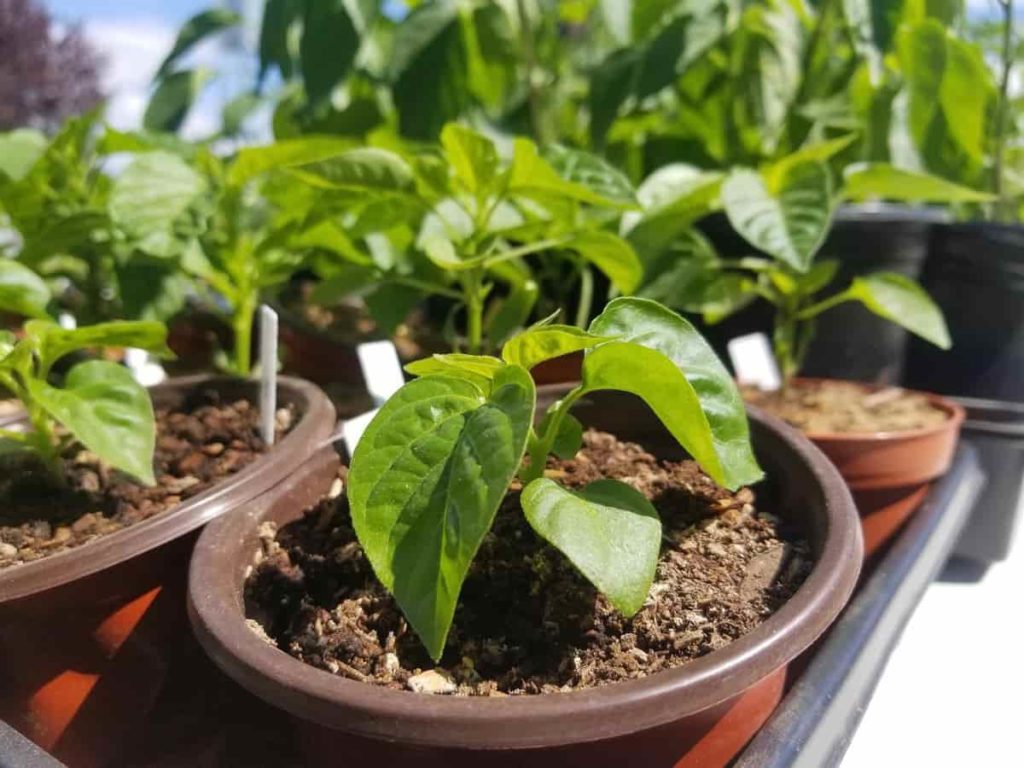
Conclusion
Organic container gardening is planting and maintaining any organic vegetable or herb in temporary or permanent containers. For individuals to start organic container gardening, all the information they need to know about it, such as its benefits, growing plants, containers to use, media to use, and vegetables. Please follow the above steps to start organic container gardening successfully.
- Types of Pesticides Used in Agriculture: A Beginner’s Guide
- Economical Aquaculture: A Guide to Low-Budget Fish Farming
- 15 Common Planting Errors That Can Doom Your Fruit Trees
- How to Make Houseplants Bushy: Effective Tips and Ideas
- Innovative Strategies for Boosting Coconut Pollination and Yield
- Pollination Strategies for Maximum Pumpkin Yield
- The Complete Guide to Chicken Fattening: Strategies for Maximum Growth
- Natural Solutions for Tulip Problems: 100% Effective Remedies for Leaf and Bulb-Related Issues
- Revolutionizing Citrus Preservation: Towards a Healthier, Greener Future
- Natural Solutions for Peony Leaf and Flower Problems: 100% Effective Remedies
- Maximizing Profits with Avocado Contract Farming in India: A Comprehensive Guide
- Natural Solutions for Hydrangea Problems: 100% Effective Remedies for Leaf and Flowers
- The Ultimate Guide to Choosing the Perfect Foliage Friend: Bringing Life Indoors
- From Sunlight to Sustainability: 15 Ways to Use Solar Technology in Agriculture
- The Ultimate Guide to Dong Tao Chicken: Exploring from History to Raising
- The Eco-Friendly Makeover: How to Convert Your Unused Swimming Pool into a Fish Pond
- Mastering the Art of Delaware Chicken Farming: Essentials for Healthy Backyard Flocks
- 20 Best Homemade Fertilizers for Money Plant: DIY Recipes and Application Methods
- How to Craft a Comprehensive Free-Range Chicken Farming Business Plan
- Brighten Your Flock: Raising Easter Egger Chickens for Beauty and Bounty
- How to Optimize Your Poultry Egg Farm Business Plan with These Strategies
- Subsidy for Spirulina Cultivation: How Indian Government Schemes Encouraging Spirulina Farmers
- Ultimate Guide to Raising Dominique Chickens: Breeding, Feeding, Egg-Production, and Care
- Mastering the Art of Raising Jersey Giant Chickens: Care, Feeding, and More
- Ultimate Guide to Raising Legbar Chickens: Breeding, Farming Practices, Diet, Egg-Production
- How to Raise Welsummer Chickens: A Comprehensive Guide for Beginners
- How to Protect Indoor Plants in Winter: A Comprehensive Guide
- Ultimate Guide to Grow Bag Gardening: Tips, Tricks, and Planting Ideas for Urban Gardeners
- Guide to Lotus Cultivation: How to Propagate, Plant, Grow, Care, Cost, and Profit
- Agriculture Drone Subsidy Scheme: Government Kisan Subsidy, License, and How to Apply Online
- Ultimate Guide to Raising Araucana Chickens: Breed Profile, Farming Economics, Diet, and Care
- Bringing Hydroponics to Classroom: Importance, Benefits of Learning for School Students
- Ultimate Guide to Raising Polish Chickens: Breed Profile, Farming Economics, Diet, and Care
- Ultimate Guide to Raising Australorp Chickens: Profile, Farming Economics, Egg Production, Diet, and Care
- Silkie Chicken Farming: Raising Practices, Varieties, Egg Production, Diet, and Care
- Sussex Chicken Farming: Raising Practices, Varieties, Egg Production, Diet and Care